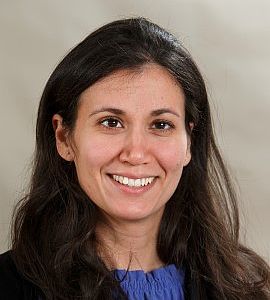Applying risk communication strategies to reduce speeding-related risks
Applying risk communication strategies to reduce speeding-related risks
Dr Gabriella Eriksson, Research Fellow, Centre for Decision Research
Prof Wandi Bruine de Bruin, Professor, Centre for Decision Research
Prof John Maule, Emeritus Professor, Centre for Decision Research
This 2-year project is funded by an EU Marie Sklodowska-Curie Individual Fellowship (agreement no: 706553), awarded to Dr Gabriella Eriksson. The project is a collaboration with Professor Wändi Bruine de Bruin at the Centre for Decision Research, Leeds University Business School.
Overall Project Aim
The overall goal of the project was an improved understanding of drivers’ perceptions of risks and benefits with speeding in the UK and Sweden and design interventions to address misunderstandings of risks and benefits. To achieve this goal, Dr Eriksson and her collaborators at Leeds University Business School pursued three objectives:
Objective 1: Identify the processes underlying drivers’ (mis)understandings of the risks and benefits of speeding
Objective 2: Examine the prevalence of misunderstandings and their relationship to inclinations to speed
Objective 3: Designing and testing tools to address driver misunderstandings and intentions to speed.
Project Objectives and Findings
The research conducted for Objective 1 found that interviewees did identify speeding as a risk factor, but seemed to have some misconceptions of what speeding actually means. Law enforcement was the most identified reason against speeding and it is therefore important that drivers understand that exceeding the speed limit even by a few units is illegal.
The follow-up survey conducted for Objective 2 confirmed that being a hurry is a common reason to speed. Previous research has suggested that drivers overestimate the time saved when increasing speed from a high speed (Eriksson et al. 2013, 2015). Thus, our findings suggest that future interventions need to focus on communicating the importance of speed limits for reducing accident risks, as well as on debiasing time-saving judgements, so that drivers realize how little time they actually save by increasing speed.
For Objective 3, we focused on an intervention that informs drivers about travel time and speed, seen in Figure 1 below. The results showed that the intervention is promising in aiding drivers to make more accurate judgements about time and speed.
Impact and Outputs
The socio-economic impact and wider societal impact of the research includes:
(i) First, the research identifies accident risk perceptions and motivations for speeding that can be used to develop driving-related communications. Dr Eriksson is preparing a series of publications to inform the academic community and stakeholders in traffic safety about the potential of the research.
(ii) Second, the intervention has proven to help drivers make time travel judgments. The intervention shows potential as a speed reduction measure and can be implemented in new in-car information technologies. The automobile industry has been informed about the intervention and a car manufacturer has developed a patent for a dashboard tool indicating time savings. A more accurate understanding of speed and time saved can reduce speed on our roads and ultimately save lives.
(iii) The intervention developed demonstrates an approach that can be used to reduce other driving-related misunderstandings about for example fuel efficiency. Findings will be presented at a symposium with leading researchers and future potential interventions will be discussed.
The following activities have been completed to disseminate and communicate research findings:
Scientific and peer-reviewed publication
Eriksson, G., Bruine de Bruin, W., Maule, J., Gonzalez, N., Louw, T., & Merat, N. (2019). Drivers’ decision to speed. Perceived risk factors and reasons for and against speeding. Presented at the 27th Subjective Probability, Utility, and Decision Making Conference, Amsterdam, Netherlands, 18-22 August 2019.
Svenson, O., Gonzalez, N., & Eriksson, G. (2018). Different heuristics and same bias: A spectral analysis of biased judgments and individual decision rules. Judgment and decision making, 13(5), 401-412.
Non-scientific and non-peer-reviewed publication (popularized publication)
Eriksson, G. (2019) written evidence to the Transport Committee’s inquiry into road safety
Social Media
Facebook MSCA IF Fellow of the Week
Blog posts
Eriksson, G. (2018). Video: Why drivers speed. Leeds University Business School Research and Innovation Blog.
Participation in Public Engagement Events
Eriksson, G. (2018). Running late? Think twice about bringing your car to full speed. Presented at the Be Curious Research Open Day, Leeds, United Kingdom, 17 March 2018.
Eriksson, G. (2019). Driver Behaviour and Road Safety. Presented at the Festival of Ideas, Leeds, United Kingdom, 8 April 2019.
Video
This project has received funding from the European Union’s Horizon 2020 research and innovation programme under the Marie Skłodowska Curie grant agreement No 706553.

Contact
Dr Gabriella Eriksson
Marie Curie Fellow, Leeds University Business School, UK
Research Fellow, The Swedish National Road and Transport Research Institute, Sweden
Cahrles Thackrah 1.23, Centre for Decision Research
Leeds University Business School, Leeds, LS2 9JT, U.K.
Phone: +44 (0) 113 343 35635
Email: G.Eriksson@leeds.ac.uk
